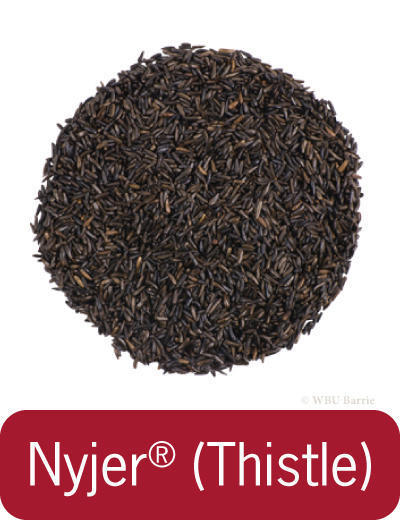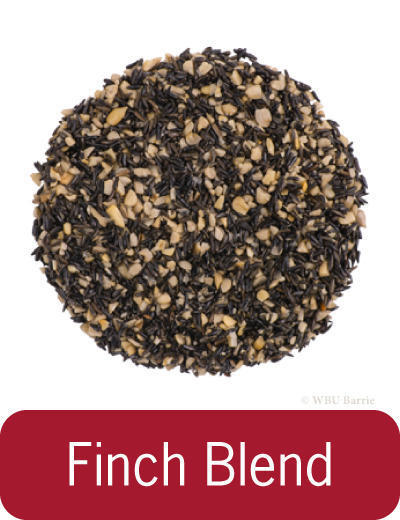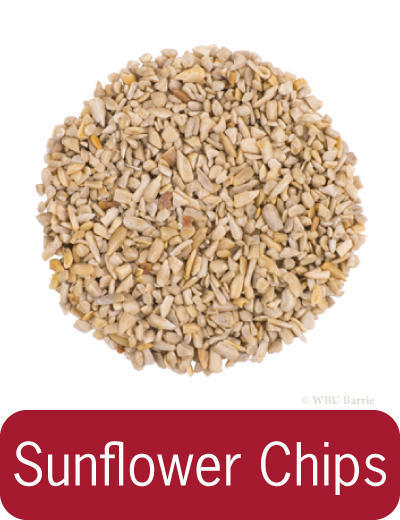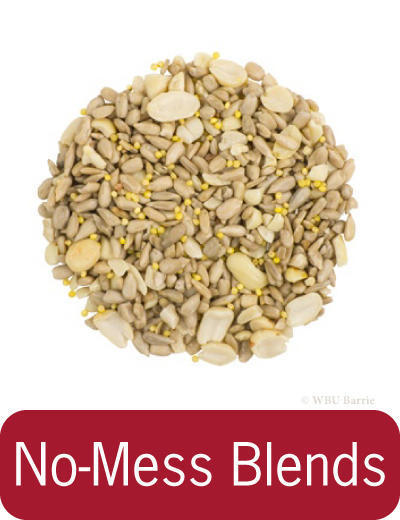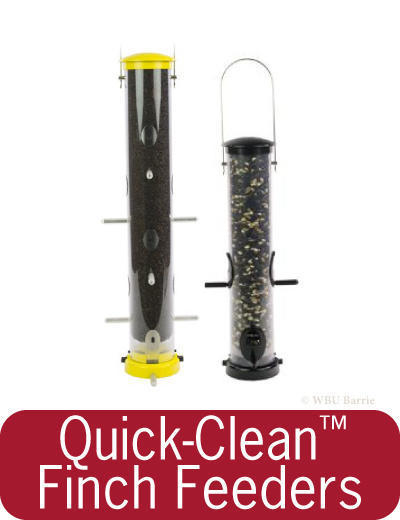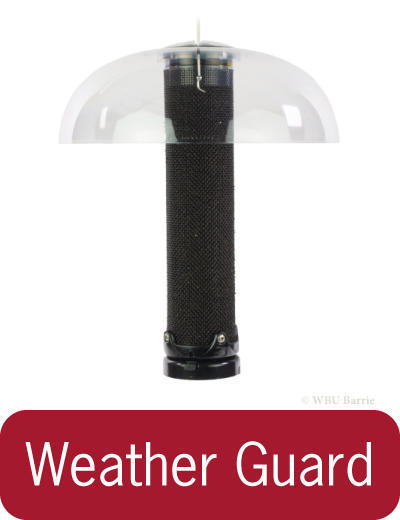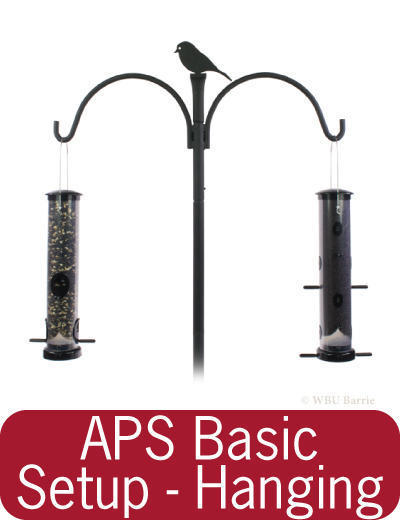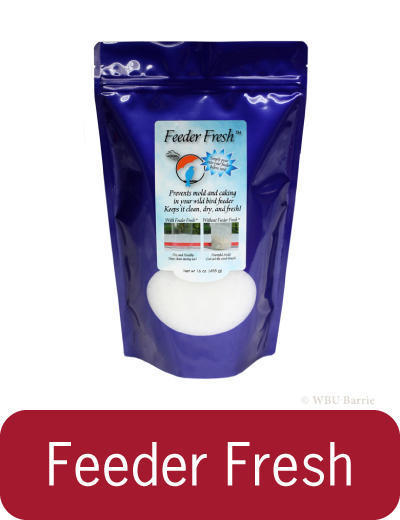Attracting American Goldfinches to Your Backyard
Goldfinches are active, acrobatic finches found in most habitats across North America, including backyards. To attract these birds to your yard, offering their favourite foods, such as Nyjer® (thistle) and Sunflower, as well as planting native thistles, purple coneflower, and other composite plants, as well as native milkweeds will help make your yard irresistible to these yellow beauties.
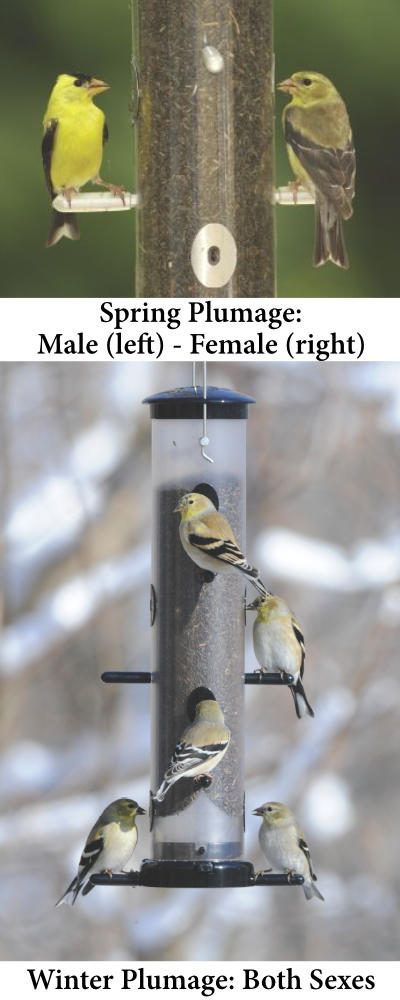
What Do American Goldfinches Look Like?
American Goldinches are small birds, approximately 11-13 cm (4.5" - 5") in length, with a short, conical bill and a short, notched tail. Springtime males are easy to distinguish from the females by their bright yellow plumage with black foreheads and wings with white markings. Adult females are a duller yellow on the belly and an olive colour above. In the winter both birds resemble the females darker colouring with two pale wing bars and are much harder to tell apart.
Do They Migrate?
More Northern populations of the American Goldfinch will migrate South to regions where the minimum January temperatures stay above -18° C (about 0° F). Here in Simcoe County the Goldfinches remain year-round, often flocking in larger winter groups including other Finches, Downy Woodpeckers, Chickadees, Cardinals and Nuthatches.
Fun Facts
Unlike many birds, Goldfinches molt their body feathers twice a year, in the spring before breeding and after nesting in the fall.
American Goldfinches breed much later than most of our resident birds in Simcoe County. Waiting until the natural food supply of milkweed, thistle and other plants have produced seeds, Goldfinches begin their nesting season in June or even July.
American Goldfinches are the strictest vegetarians in the bird world, only ingesting insects accidentally. Even their babies are fed only a plant based diet!
For more information visit this great resource: All About Birds - American Goldfinch
Foods
We recommend offering fresh Nyjer® (thistle) because it is goldfinches’ favorite feeder food. Nyjer® has a high oil content and is an excellent energy source for these active birds.
Feeders
To attract goldfinches to your yard, we recommend offering the right food and designated finch feeders or a designated finch-feeding station.
- WBU Quick-Clean™ Finch Feeders accommodate goldfinches’ small bills and allow them to easily dine on Nyjer®. These feeders’ removable bases make cleaning a breeze. They are easy to fill and hang, deter squirrels and come with a lifetime guarantee.
- Simply add our Weather Guard Dome to your finch feeder to help keep seed dry and protect birds from inclement weather.
- Because they locate food by sight, provide goldfinches with their own feeding station in an open, easy-to-find area, a feeder such as the WBU Dinner Bell Feeder provides this open station with built in weather coverage.
Create a goldfinch feeding station with our exclusive Advanced Pole System® (APS) Basic Setup Hanging Hardware. It’s easy to construct and maintain. Just plant it into the ground, add the extension poles and arms, and top it with the decorative finial. Then fill and hang your feeders.
Keep your Nyjer® fresh and mold-free with Feeder Fresh™. Mix it with the seed in your feeders, and the absorbent granules will “drink up” excess moisture. Feeder Fresh is completely safe for you and your birds.
Birdbaths (Water)
 Water is essential to all birds and providing a bird bath means they don’t have to travel great distances to find water. Water in a bird bath should be cleaned regularly as birds defecate, leave bits of food and feathers in the bath, not to mention leaves and other items that can end up in a bath. In the winter, heated birdbaths provide an excellent place for birds to drink. During the warmer months the WBU Water Wigglers and Solar Fountains create moving water in your birdbath, making the bath even more attractive to birds. WBU Barrie carries a variety of plastic, metal and clay birdbaths and accessories, as well as heated birdbaths for the colder months. Visit our page on birdbaths for a selection of styles as well as accessories like brushes, solar fountains, water wigglers and Fountain Fresh Water Clarifier.
Water is essential to all birds and providing a bird bath means they don’t have to travel great distances to find water. Water in a bird bath should be cleaned regularly as birds defecate, leave bits of food and feathers in the bath, not to mention leaves and other items that can end up in a bath. In the winter, heated birdbaths provide an excellent place for birds to drink. During the warmer months the WBU Water Wigglers and Solar Fountains create moving water in your birdbath, making the bath even more attractive to birds. WBU Barrie carries a variety of plastic, metal and clay birdbaths and accessories, as well as heated birdbaths for the colder months. Visit our page on birdbaths for a selection of styles as well as accessories like brushes, solar fountains, water wigglers and Fountain Fresh Water Clarifier.
Nesting
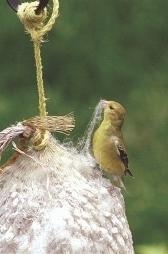 Both the male and female of this species choose the nest site together, usually placed high in a shrub or sapling, seeming to prefer a more open setting instead of deeper into the forest. Often the nest is shaded from above by leaves and needles, but often is quite visible from below. The female builds the nest alone, attaching it to the foundation with spider silk. The nest is an open cup of rootlets and other plant fibers and lined with plant down to create a soft interior lining. She weaves the nest so tightly it is often waterproof! While they will not use a man-made nesting box, you can try offering nesting material such as Alpaca fleece, WBU Nest Building Material, pet hair, or even our Hummer Helper to encourage them to nest in your area by providing nesting material with which to line their nest. This soft, cotton material comes with a mesh hanger so you can offer it near your nectar feeder.
Both the male and female of this species choose the nest site together, usually placed high in a shrub or sapling, seeming to prefer a more open setting instead of deeper into the forest. Often the nest is shaded from above by leaves and needles, but often is quite visible from below. The female builds the nest alone, attaching it to the foundation with spider silk. The nest is an open cup of rootlets and other plant fibers and lined with plant down to create a soft interior lining. She weaves the nest so tightly it is often waterproof! While they will not use a man-made nesting box, you can try offering nesting material such as Alpaca fleece, WBU Nest Building Material, pet hair, or even our Hummer Helper to encourage them to nest in your area by providing nesting material with which to line their nest. This soft, cotton material comes with a mesh hanger so you can offer it near your nectar feeder.


